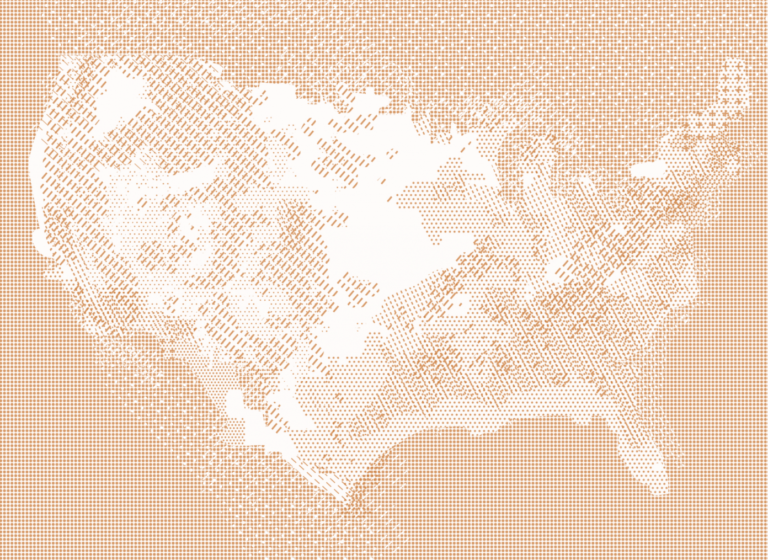
Jean-Philippe Uzan
CNRS research director (theoretical physics)
October 2022

Crédits: Marili Clark
- Music
- Social Sciences and Humanities
- Houston
“Starting with a fictional premise, I would like to explore an imagined anthropological hypothesis that separates humanity into two species and considers how these future extraterrestrials might evolve.”
I’m a research director at CNRS, specializing in gravitation and cosmology at the Paris Institute of Astrophysics (IAP). I am also involved in scientific outreach work.
Centered on the Big Bang model, my research has led me to reflect on what kind of knowledge is produced by science and how it relates to other forms of discourse on the world. I have worked on initiatives to change the public’s view of science (including through cinema and fiction, as well as through urban astronomy geared particularly toward hospitalized children, young refugees, and young migrants).
Following an artistic approach, I explore the porosity between these different perspectives on the world. Avoiding the vague ambivalence of the term ‘interdisciplinarity’, I strive instead to develop an ‘indiscipline’ as a free space to conceive of the world without the disciplinary constraints of relativism. In this spirit, I have investigated the bonds between music and astronomy in my book, The Secret Harmony of the Universe (2017); and our ever-evolving view of the skies above in the plays 5.Tera-Nuits+1 (“5.Tera-Nights+1”) (2020) and Dark Conférence (“Dark Conference”) (2017). In music, I have also been involved in creating the installation, Vostok (2010); in directing Formulaire (“Form”) (2017); and in writing Hawking Songs (2021). In 2019, I launched the Sanctuary project, and transformed the Eiffel Tower into a sundial.
During my residency, I will continue exploring our relationship with sky, space, and the resources contained therein. This time, I will take a more political stance, which I deem necessary in the current global context.
Jean-Philippe Uzan has published over 150 articles in international journals, as well as three monographs. He formerly held the title of Deputy Director at the Henri Poincaré Institute (IHP).
Uzan was awarded the Paul Langevin Prize in 2010, followed by the Georges Lemaître Prize in 2015. The (35391) XN3 asteroid has been named in his honor. He has also written nine popular science books, including Big-Bang, which won the 2019 Astronomy Book Prize (Prix du Livre d’Astronomie).
Crossing perspectives from science, anthropology and art, Jean-Philippe Uzan has collaborated with many artists, including the theater director, Étienne Pommeret; the composers Eddie Ladoire, Fabien Waksman, and Arnaud Petit; and the plastic artist, SMITH.
“Dialog on Two Humanities” is based on two observations born from current understanding around our conquest of space.
The first asserts that the human body is not adapted to space the way we see it. Any exploration of space is, by extension, an exploration of our bodily plasticity, of evolution, and of the metamorphosis of the human species. Is it possible to conceive of a humanity that lives beyond Earth? If a community were to leave our planet, would it not evolve into a new humanoid branch encompassing tightly interwoven spatial, cultural, and genetic variations? Such an historic foray into space would upend the homogenization of human cultures that has been caused by globalization. Might this divergence—the first step toward new human diversity—signify the birth of an “extraterrestrial human” or, indeed, a “human extraterrestrial”? In this way, could it redefine our concept of otherness? And would we still be able to recognize each other as humans?
The second observation is that the very idea of conquest is tied to a particular relationship between nature and culture. It raises questions of accessing resources, occupying space, and deciding to whose benefit or detriment such a conquest would be conducted.
Starting with a fictional premise, I would like to explore an imagined anthropological hypothesis that separates humanity into two species and considers how these extraterrestrials of the future might evolve. On what basis would this separation take place? What would happen if one portion of humanity left to conquer space and ended up evolving far away from Earth? Taking into account the three essential viewpoints of science, anthropology, and art, what can we envisage as we study our capacity to build our world(s)?
By allowing our imagination to wander through this theory, we question the very foundations of our humanity.
The US is a giant of space exploration, imposing its vision and esthetic both through the real world of technology and through the fictional world of movies. The legend of the New Frontier is embedded within this history, but this vision is fraught with heavy consequences, given that it considers a territory simply as a space to be conquered rather than an encounter or collaboration. Today, a new private model is developing in the field, but it is based on a very juvenile vision of space.
Marfa has suffered the tragic consequences brought on by this conquest of the “new world”. It has seen disastrous effects on nature and on Native American populations through the reduction of their space, both physically and culturally (by way of land grabbing, dispossession, destruction, and pollution). All contact is accompanied by hybridization and adaptation to the invading culture. Following this logic, space exploration can be thought of as the ultimate stage in the appropriation of natural resources. To paraphrase Nathan Wachtel, what exactly is the vision of the vanquishers in this conquest?
During my trip to Marfa, I intend to spend time in the desert (a mirror unto the isolation of space) and head to the McDonald observatory (to observe the deleterious effects of its many clusters of satellites). As well as this, I will explore the region from a trucker’s cab to grasp the nature of monotonous, drawn-out space and time. Finally, I will meet with members of pueblo communities (studying their cosmological recountings of their sky to portray another dimension of the nature-culture relationship), hoping that such encounters will form a mise en abyme for our modern representation of space and our conquest of it.
This work will allow me to continue exploring our diverse relationships with the sky and cosmos.
In partnership with

Centre Pompidou
Since 1977, the Centre Pompidou has presented a rich programme at the crossroads between different art forms and audiences. Its iconic building is home to one of the world’s largest modern and contemporary art collections, in addition to exhibitions, symposiums, festivals, shows, projections, and workshops for young audiences, making it an unparalleled cultural institution, deeply rooted in the cultural fabric of Paris and open to the world and to new innovation.




